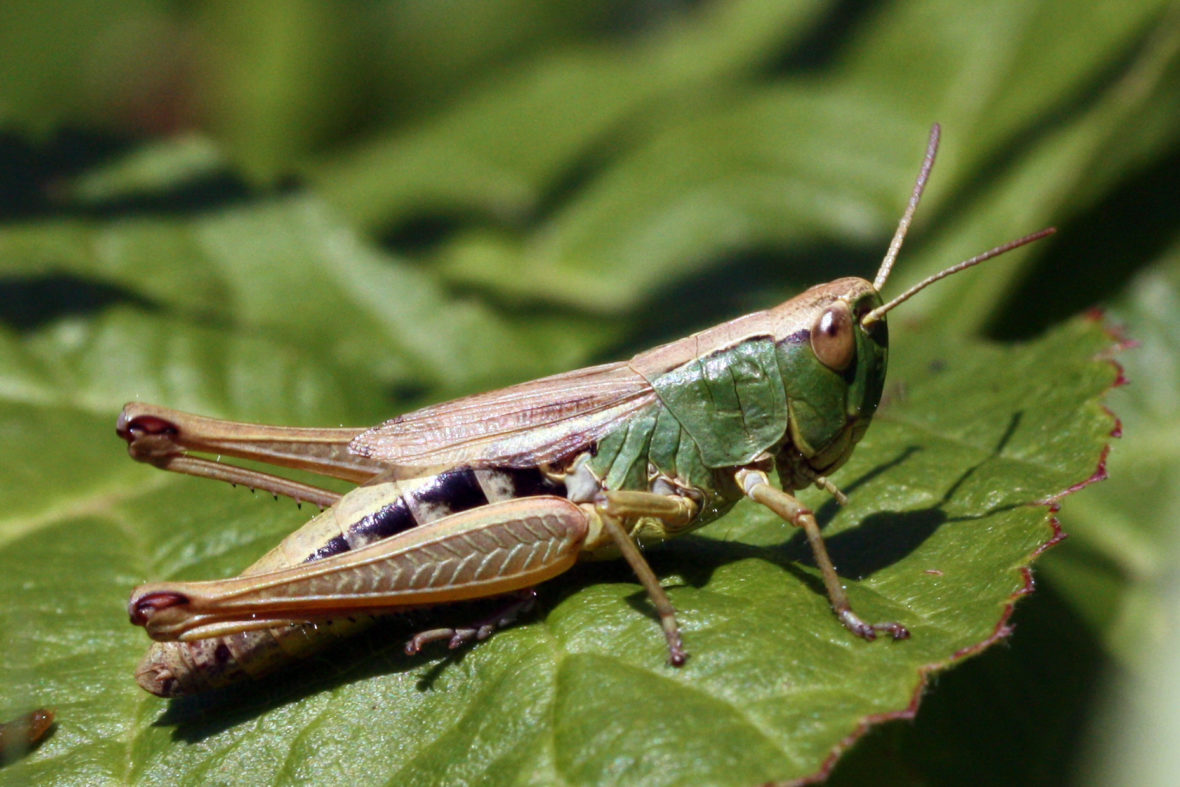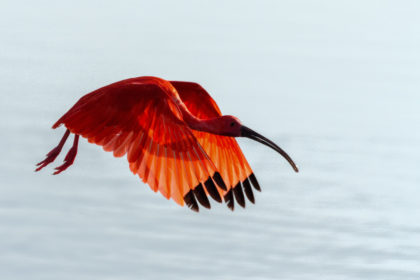Grasshoppers are insects that belong to the Orthoptera order and Caelifera suborder. There are 11,000 known species of grasshoppers. They can be found on every continent except Antarctica. Take a look below for 28 more interesting and weird facts about grasshoppers.
1. They prefer dry open habitats with a lot of grass and other low plants, however, some species are known to live in dense forests and jungles. Most grassland grasshoppers are known to invade a farmer’s fields.
2. Their lifespan depends on the climate. If they’re in a cold climate, they will only survive winter as an egg. In warmer climates, they’re capable of living for up to 7 years.
3. Grasshoppers have an average insect body that consists of a head, thorax and abdomen.
4. They’re considered to be medium to large insects. Fully grown grasshoppers can be between 1 and 7 centimeters, or 0.4 to 2.75 inches, in length. Female grasshoppers are usually bigger than males.
5. Their head has large compound eyes that give the grasshopper 360 degree vision. A grasshopper’s eyes can detect light and dark, and their antennae are sensitive enough to feel any inconsistencies in the space around them.
6. They have two pairs of wings, the first of which is narrow and tough and the second of which is wide and flexible. They also have long hind legs, which enable them to jump relatively far.
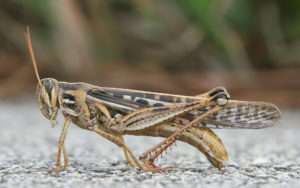
7. Grasshoppers are usually colored so they can blend into their environment. In some species, male grasshoppers have bright colors on their wings so they can attract females. Others eat toxic plants and keep the toxins in their bodies for protection.
8. They’re ground dwelling insects that use their hind legs to escape from predator by quickly leaping away.
9. Fully grown grasshoppers are able to leave 10 times their own length into the air and 20 times its own length horizontally without using its wings.
10. They’re able to jump such vast distances because a small cuticle in a grasshopper’s knee acts as a spring and lets it catapult its body into the air.
11. A grasshoppers peak acceleration during take-off approaches 20G of forces. Compare that to a fight jet, which can experience 9G of force at full speed.
12. Most grasshopper species can fly relatively well. They use their hind legs as a booster to propel them into the air, where they will spread their wings and fly. They can reach a speed of 13 kilometers, or 8 miles, an hour when flying.
13. They’re herbivores, which means that they primarily feed on plants. Their diet consists of corn, wheat, barley, alfalfa, grass, and tree leaves.
14. They don’t have nests or territories, as they frequently migrate to better food sources.
15. Grasshoppers are solitary, only coming together to mate. The migratory species tend to come together in groups of millions or even billions of members.
16. They use sound and sight to communicate, and scent and touch to mate. Some grasshopper species have males that vibrate their wings or rub their wings with their legs to make sounds that will attract females.
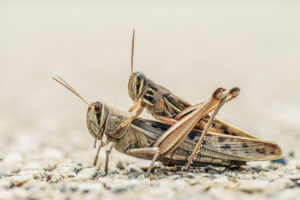
17. They mate in late summer or fall. After mating, the female grasshopper lays hundreds of egg pods in the ground. The eggs will stay there over winter and hatch in late May.
18. The nymphs that hatch from the eggs will go through multiple incomplete metamorphosis stages. During these stages, the nymphs look like adult grasshoppers, but each time they shed their skin, they add a few changes to their body.
19. Grasshoppers are prayed upon by a few different animals and insects. Their eggs are eaten by bee-flies, ground beetles and blister beetles. The nymphs and adult grasshoppers are eaten by ants, robber flies, praying mantises, sphecid wasps, spiders, lizards, most birds and most small mammals.
20. Locusts are a species of grasshopper. They live alone but form massive swarms that can destroy large areas of crops.
21. The biggest recorded locust swarm was formed by the Rocky Mountain locust in 1875. The swarm was 2,900 kilometers, or 1,800 miles, long and 180 kilometers, or 110 miles, wide. It’s estimated that there were 3.5 trillion locusts in the swarm.
22. Grasshoppers existed before dinosaurs. They date back to the early Triassic period, which was 250 million years ago.
23. They’re commonly eaten in Africa, Asia, Central and South America. Grasshoppers are a very good source of protein.
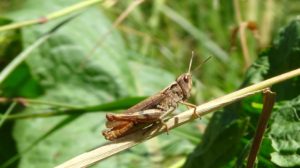
24. The Ohlone people burned grassland to herd grasshoppers into pits where they could be collected and used as food.
25. In the Bible, John the Baptist ate locusts and wild honey while living in the wilderness.
26. When grasshoppers appear in dreams, they can be interpreted as symbols of freedom, independence, spiritual enlightenment, the inability to settle down or commit to a decision.
27. In Japan, grasshoppers as seen as a sign of good luck.
28. In the movie A Bug’s Life, the main villain and his henchmen were all grasshoppers.

